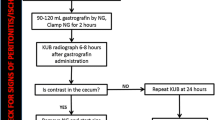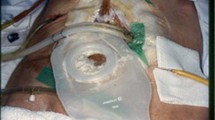Abstract
New blood vessels arise initially as blood islands in the process known as vasculogenesis or as new capillary segments produced through angiogenesis. Angiogenesis itself encompasses two broad processes, namely sprouting (SA) and intussusceptive (IA) angiogenesis. Primordial capillary plexuses expand through both SA and IA, but subsequent growth and remodeling are achieved through IA. The latter process proceeds through transluminal tissue pillar formation and subsequent vascular splitting, and the direction taken by the pillars delineates IA into overt phases, namely: intussusceptive microvascular growth, intussusceptive arborization, and intussusceptive branching remodeling. Intussusceptive microvascular growth circumscribes the process of initiation of pillar formation and their subsequent expansion with the result that the capillary surface area is greatly enhanced. In contrast, intussusceptive arborization entails formation of serried pillars that remodel the disorganized vascular meshwork into the typical tree-like arrangement. Optimization of local vascular branching geometry occurs through intussusceptive branching remodeling so that the vasculature is remodeled to meet the local demand. In addition, IA is important in creation of the local organ-specific angioarchitecture. While hemodynamic forces have proven direct effects on IA, with increase in blood flow resulting in initiation of pillars, the preponderant mechanisms are unclear. Molecular control of IA has so far not been unequivocally elucidated but interplay among several factors is probably involved. Future investigations are strongly encouraged to focus on interactions among angiogenic growth factors, angiopoetins, and related receptors.






Similar content being viewed by others
References
Caduff JH, Fischer LC, Burri PH (1986) Scanning electron microscope study of the developing microvasculature in the postnatal rat lung. Anat Rec 216:154–164. doi:10.1002/ar.1092160207
Burri PH, Tarek MR (1990) A novel mechanism of capillary growth in the rat pulmonary microcirculation. Anat Rec 228:35–45. doi:10.1002/ar.1092280107
Djonov V, Makanya AN (2005) New insights into intussusceptive angiogenesis. EXS 94:17–33
Schlatter P, Konig MF, Karlsson LM, Burri PH (1997) Quantitative study of intussusceptive capillary growth in the chorioallantoic membrane (CAM) of the chicken embryo. Microvasc Res 54:65–73. doi:10.1006/mvre.1997.2022
Burri PH, Dbaly J, Weibel ER (1974) The postnatal growth of the rat lung. I. Morphometry. Anat Rec 178:711–730. doi:10.1002/ar.1091780405
Zeltner TB, Caduff JH, Gehr P, Pfenninger J, Burri PH (1987) The postnatal development and growth of the human lung. I. Morphometry. Respir Physiol 67:247–267. doi:10.1016/0034-5687(87)90057-0
Kauffman SL, Burri PH, Weibel ER (1974) The postnatal growth of the rat lung. II. Autoradiography. Anat Rec 180:63–76. doi:10.1002/ar.1091800108
Djonov V, Baum O, Burri PH (2003) Vascular remodeling by intussusceptive angiogenesis. Cell Tissue Res 314:107–117. doi:10.1007/s00441-003-0784-3
Makanya AN, Sparrow MP, Warui CN, Mwangi DK, Burri PH (2001) Morphological analysis of the postnatally developing marsupial lung: the quokka wallaby. Anat Rec 262:253–265. doi:10.1002/1097-0185(20010301)262:3<253::AID-AR1025>3.0.CO;2-B
Rizzo V, DeFouw DO (1993) Macromolecular selectivity of chick chorioallantoic membrane microvessels during normal angiogenesis and endothelial differentiation. Tissue Cell 25:847–856. doi:10.1016/0040-8166(93)90033-H
Djonov VG, Galli AB, Burri PH (2000) Intussusceptive arborization contributes to vascular tree formation in the chick chorio-allantoic membrane. Anat Embryol (Berl) 202:347–357. doi:10.1007/s004290000126
Djonov V, Schmid M, Tschanz SA, Burri PH (2000) Intussusceptive angiogenesis: its role in embryonic vascular network formation. Circ Res 86:286–292
Djonov V, Andres AC, Ziemiecki A (2001) Vascular remodelling during the normal and malignant life cycle of the mammary gland. Microsc Res Tech 52:182–189. doi:10.1002/1097-0029(20010115)52:2<182::AID-JEMT1004>3.0.CO;2-M
Djonov VG, Kurz H, Burri PH (2002) Optimality in the developing vascular system: branching remodeling by means of intussusception as an efficient adaptation mechanism. Dev Dyn 224:391–402. doi:10.1002/dvdy.10119
Burri PH, Djonov V (2002) Intussusceptive angiogenesis—the alternative to capillary sprouting. Mol Aspects Med 23:S1–S27. doi:10.1016/S0098-2997(02)00096-1
Kurz H, Burri PH, Djonov VG (2003) Angiogenesis and vascular remodeling by intussusception: from form to function. News Physiol Sci 18:65–70
Burri PH, Hlushchuk R, Djonov V (2004) Intussusceptive angiogenesis: its emergence, its characteristics, and its significance. Dev Dyn 231:474–488. doi:10.1002/dvdy.20184
Makanya AN, Hlushchuk R, Baum O, Velinov N, Ochs M, Djonov V (2007) Microvascular endowment in the developing chicken embryo lung. Am J Physiol Lung Cell Mol Physiol 292:L1136–L1146. doi:10.1152/ajplung.00371.2006
Makanya AN, Stauffer D, Ribatti D, Burri PH, Djonov V (2005) Microvascular growth, development, and remodeling in the embryonic avian kidney: the interplay between sprouting and intussusceptive angiogenic mechanisms. Microsc Res Tech 66:275–288. doi:10.1002/jemt.20169
van Groningen JP, Wenink AC, Testers LH (1991) Myocardial capillaries: increase in number by splitting of existing vessels. Anat Embryol (Berl) 184:65–70. doi:10.1007/BF01744262
Egginton S (2008) Invited review: activity-induced angiogenesis. Pflugers Arch. doi:10.1007/s00424-008-0563-9
Williams JL, Weichert A, Zakrzewicz A, Da Silva-Azevedo L, Pries AR, Baum O et al (2006) Differential gene and protein expression in abluminal sprouting and intraluminal splitting forms of angiogenesis. Clin Sci (Lond) 110:587–595. doi:10.1042/CS20050185
Zhou A, Egginton S, Hudlicka O, Brown MD (1998) Internal division of capillaries in rat skeletal muscle in response to chronic vasodilator treatment with alpha1-antagonist prazosin. Cell Tissue Res 293:293–303. doi:10.1007/s004410051121
Prior BM, Yang HT, Terjung RL (2004) What makes vessels grow with exercise training? J Appl Physiol 97:1119–1128. doi:10.1152/japplphysiol.00035.2004
Weibel ER, Taylor CR, Hoppeler H (1991) The concept of symmorphosis: a testable hypothesis of structure–function relationship. Proc Natl Acad Sci USA 88:10357–10361. doi:10.1073/pnas.88.22.10357
Murray CD (1926) The physiological principle of minimum work: I. The vascular system and the cost of blood volume. Proc Natl Acad Sci USA 12:207–214. doi:10.1073/pnas.12.3.207
Frame MD, Sarelius IH (1993) Arteriolar bifurcation angles vary with position and when flow is changed. Microvasc Res 46:190–205. doi:10.1006/mvre.1993.1046
Stanton AV, Wasan B, Cerutti A, Ford S, Marsh R, Sever PP et al (1995) Vascular network changes in the retina with age and hypertension. J Hypertens 13:1724–1728. doi:10.1097/00004872-199501000-00008
Ashton N (1966) Oxygen and the growth and development of retinal vessels. In vivo and in vitro studies. The XX Francis I. Proctor lecture. Am J Ophthalmol 62:412–435
Bongrazio M, Da Silva-Azevedo L, Bergmann EC, Baum O, Hinz B, Pries AR et al (2006) Shear stress modulates the expression of thrombospondin-1 and CD36 in endothelial cells in vitro and during shear stress-induced angiogenesis in vivo. Int J Immunopathol Pharmacol 19:35–48
Dor Y, Porat R, Keshet E (2001) Vascular endothelial growth factor and vascular adjustments to perturbations in oxygen homeostasis. Am J Physiol Cell Physiol 280:C1367–C1374
Clarke ER, Clarke EL (1939) Microscopic observations of the growth of blood capillaries in the living mammal. Am J Anat 64:251–299. doi:10.1002/aja.1000640203
Ishida S, Yamashiro K, Usui T, Kaji Y, Ogura Y, Hida T et al (2003) Leukocytes mediate retinal vascular remodeling during development and vaso-obliteration in disease. Nat Med 9:781–788. doi:10.1038/nm877
Macchiarelli G, Jiang JY, Nottola SA, Sato E (2006) Morphological patterns of angiogenesis in ovarian follicle capillary networks. A scanning electron microscopy study of corrosion cast. Microsc Res Tech 69:459–468. doi:10.1002/jemt.20305
Hlushchuk R, Riesterer O, Baum O, Wood J, Gruber G, Pruschy M et al (2008) Tumor recovery by angiogenic switch from sprouting to intussusceptive angiogenesis after treatment with PTK787/ZK222584 or ionizing radiation. Am J Pathol 173:1173–1185. doi:10.2353/ajpath.2008.071131
Patan S, Munn LL, Jain RK (1996) Intussusceptive microvascular growth in a human colon adenocarcinoma xenograft: a novel mechanism of tumor angiogenesis. Microvasc Res 51:260–272. doi:10.1006/mvre.1996.0025
Davies PF (1995) Flow-mediated endothelial mechanotransduction. Physiol Rev 75:519–560
Milkiewicz M, Uchida C, Gee E, Fudalewski T, Haas TL (2008) Shear stress-induced Ets-1 modulates protease inhibitor expression in microvascular endothelial cells. J Cell Physiol 217:502–510. doi:10.1002/jcp.21526
Tressel SL, Huang RP, Tomsen N, Jo H (2007) Laminar shear inhibits tubule formation and migration of endothelial cells by an angiopoietin-2 dependent mechanism. Arterioscler Thromb Vasc Biol 27:2150–2156. doi:10.1161/ATVBAHA.107.150920
Franke RP, Grafe M, Schnittler H, Seiffge D, Mittermayer C, Drenckhahn D (1984) Induction of human vascular endothelial stress fibres by fluid shear stress. Nature 307:648–649. doi:10.1038/307648a0
Davies PF, Remuzzi A, Gordon EJ, Dewey CF Jr, Gimbrone MA Jr (1986) Turbulent fluid shear stress induces vascular endothelial cell turnover in vitro. Proc Natl Acad Sci USA 83:2114–2117. doi:10.1073/pnas.83.7.2114
Ichioka S, Shibata M, Kosaki K, Sato Y, Harii K, Kamiya A (1998) In vivo measurement of morphometric and hemodynamic changes in the microcirculation during angiogenesis under chronic alpha1-adrenergic blocker treatment. Microvasc Res 55:165–174. doi:10.1006/mvre.1998.2069
Egginton S, Zhou AL, Brown MD, Hudlicka O (2001) Unorthodox angiogenesis in skeletal muscle. Cardiovasc Res 49:634–646. doi:10.1016/S0008-6363(00)00282-0
Hudlicka O, Brown M, Egginton S (1992) Angiogenesis in skeletal and cardiac muscle. Physiol Rev 72:369–417
Rivilis I, Milkiewicz M, Boyd P, Goldstein J, Brown MD, Egginton S et al (2002) Differential involvement of MMP-2 and VEGF during muscle stretch- versus shear stress-induced angiogenesis. Am J Physiol Heart Circ Physiol 283:H1430–H1438
Osawa M, Masuda M, Kusano K, Fujiwara K (2002) Evidence for a role of platelet endothelial cell adhesion molecule-1 in endothelial cell mechanosignal transduction: is it a mechanoresponsive molecule? J Cell Biol 158:773–785. doi:10.1083/jcb.200205049
Fisher AB, Chien S, Barakat AI, Nerem RM (2001) Endothelial cellular response to altered shear stress. Am J Physiol Lung Cell Mol Physiol 281:L529–L533
Zakrzewicz A, Secomb TW, Pries AR (2002) Angioadaptation: keeping the vascular system in shape. News Physiol Sci 17:197–201
Urbich C, Stein M, Reisinger K, Kaufmann R, Dimmeler S, Gille J (2003) Fluid shear stress-induced transcriptional activation of the vascular endothelial growth factor receptor-2 gene requires Sp1-dependent DNA binding. FEBS Lett 535:87–93. doi:10.1016/S0014-5793(02)03879-6
Morbidelli L, Chang CH, Douglas JG, Granger HJ, Ledda F, Ziche M (1996) Nitric oxide mediates mitogenic effect of VEGF on coronary venular endothelium. Am J Physiol 270:H411–H415
Hudetz AG, Kiani MF (1992) The role of wall shear stress in microvascular network adaptation. Adv Exp Med Biol 316:31–39
Clarke ER, Clarke EL (1940) Microscopic observations on the extraendothelial cells of living mammalian blood vessels. Am J Anat 66:1–49. doi:10.1002/aja.1000660102
Zhang J, Cao R, Zhang Y, Jia T, Cao Y, Wahlberg E (2009) Differential roles of PDGFR-{alpha} and PDGFR-{beta} in angiogenesis and vessel stability. FASEB J 23:153–163
Benjamin LE, Hemo I, Keshet E (1998) A plasticity window for blood vessel remodelling is defined by pericyte coverage of the preformed endothelial network and is regulated by PDGF-B and VEGF. Development 125:1591–1598
Hellstrom M, Kalen M, Lindahl P, Abramsson A, Betsholtz C (1999) Role of PDGF-B and PDGFR-beta in recruitment of vascular smooth muscle cells and pericytes during embryonic blood vessel formation in the mouse. Development 126:3047–3055
Ohlsson R, Falck P, Hellstrom M, Lindahl P, Bostrom H, Franklin G et al (1999) PDGFB regulates the development of the labyrinthine layer of the mouse fetal placenta. Dev Biol 212:124–136. doi:10.1006/dbio.1999.9306
Suri C, Jones PF, Patan S, Bartunkova S, Maisonpierre PC, Davis S et al (1996) Requisite role of angiopoietin-1, a ligand for the TIE2 receptor, during embryonic angiogenesis. Cell 87:1171–1180. doi:10.1016/S0092-8674(00)81813-9
Uemura A, Ogawa M, Hirashima M, Fujiwara T, Koyama S, Takagi H et al (2002) Recombinant angiopoietin-1 restores higher-order architecture of growing blood vessels in mice in the absence of mural cells. J Clin Invest 110:1619–1628
Betsholtz C, Karlsson L, Lindahl P (2001) Developmental roles of platelet-derived growth factors. Bioessays 23:494–507. doi:10.1002/bies.1069
Thurston G, Suri C, Smith K, McClain J, Sato TN, Yancopoulos GD et al (1999) Leakage-resistant blood vessels in mice transgenically overexpressing angiopoietin-1. Science 286:2511–2514. doi:10.1126/science.286.5449.2511
Thurston G (2002) Complementary actions of VEGF and angiopoietins on blood vessel permeability and growth in mice. J Anat 200:529. doi:10.1046/j.1469-7580.2002.00061.x
Thurston G (2002) Complementary actions of VEGF and angiopoietin-1 on blood vessel growth and leakage. J Anat 200:575–580. doi:10.1046/j.1469-7580.2002.00061.x
Carmeliet P, Ferreira V, Breier G, Pollefeyt S, Kieckens L, Gertsenstein M et al (1996) Abnormal blood vessel development and lethality in embryos lacking a single VEGF allele. Nature 380:435–439. doi:10.1038/380435a0
Ferrara N, Carver-Moore K, Chen H, Dowd M, Lu L, O’Shea KS et al (1996) Heterozygous embryonic lethality induced by targeted inactivation of the VEGF gene. Nature 380:439–442. doi:10.1038/380439a0
Acknowledgments
The figures in this article were reproduced and/or modified with the kind permission from the relevant copyright holders. These studies were supported by a Swiss National Science foundation grant to VD.
Author information
Authors and Affiliations
Corresponding author
Rights and permissions
About this article
Cite this article
Makanya, A.N., Hlushchuk, R. & Djonov, V.G. Intussusceptive angiogenesis and its role in vascular morphogenesis, patterning, and remodeling. Angiogenesis 12, 113–123 (2009). https://doi.org/10.1007/s10456-009-9129-5
Received:
Accepted:
Published:
Issue Date:
DOI: https://doi.org/10.1007/s10456-009-9129-5




